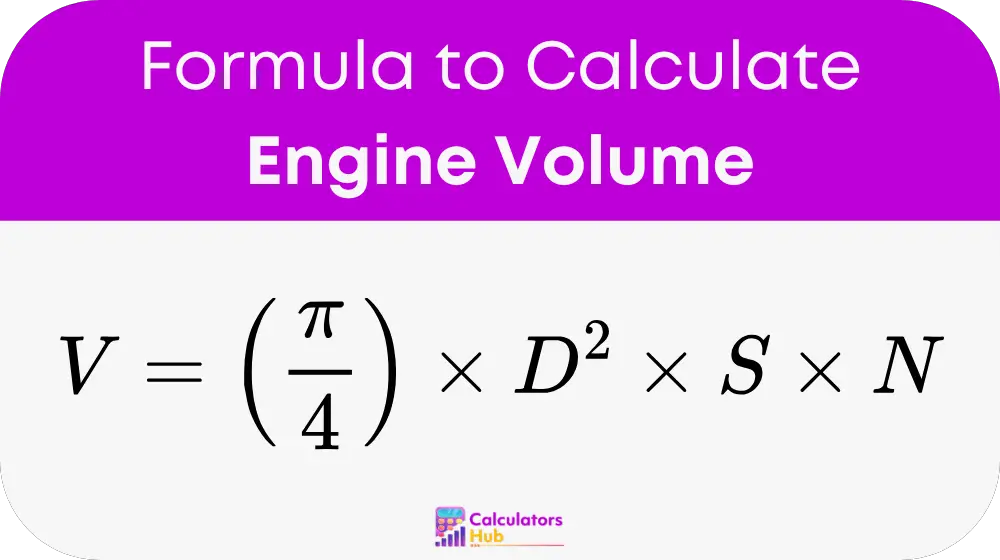The Engine Volume Calculator determines the total displacement or swept volume of an internal combustion engine. This value represents the volume swept by all pistons inside the cylinders from the top to the bottom of the stroke. It’s a critical specification used in engine classification, performance tuning, fuel efficiency studies, and emissions analysis. The calculator belongs to the Automotive Engineering and Engine Specification Calculator category.
Displacement directly influences torque, power, and regulatory classification. This calculator helps engineers, mechanics, students, and enthusiasts ensure accurate engine measurements across various applications.
Formula of Engine Volume Calculator

Detailed Breakdown:
- V = Total engine volume or displacement (in cubic centimeters – cc or liters)
- D = Bore diameter of each cylinder (in centimeters or inches)
- S = Stroke length of the piston (in the same unit as bore)
- N = Number of cylinders in the engine
- π / 4 ≈ 0.7854, used to convert diameter to cross-sectional area of a circle
Ensure that units are consistent (either all in inches or all in centimeters) before using the formula. The output can be converted into liters (1,000 cc = 1 L) as needed.
Quick Reference Table
Below is a helpful table showing estimated engine volumes based on bore, stroke, and cylinder count combinations:
| Bore (cm) | Stroke (cm) | Cylinders | Engine Volume (cc) |
|---|---|---|---|
| 7.5 | 8.0 | 4 | 1,413 |
| 8.0 | 8.5 | 4 | 1,709 |
| 9.0 | 9.0 | 6 | 3,431 |
| 9.5 | 9.5 | 8 | 5,370 |
| 10.0 | 10.0 | 12 | 9,424 |
Use this table to make quick estimates without full calculation, especially when comparing engine specs.
Example of Engine Volume Calculator
Let’s calculate the engine volume for a 4-cylinder engine with the following specs:
- Bore = 8.2 cm
- Stroke = 9.0 cm
- Cylinders = 4
Step 1:
Apply the formula:
V = 0.7854 × (8.2)² × 9.0 × 4
V = 0.7854 × 67.24 × 9.0 × 4 ≈ 0.7854 × 2419.68 ≈ 1,900.1
So, the engine displacement is approximately 1900 cc or 1.9 liters.
Most Common FAQs
Engine displacement refers to the total volume swept by all pistons in the engine’s cylinders. It’s a key factor in determining engine size, output, and classification.
Yes. Generally, larger displacement allows for more air and fuel per cycle, resulting in more torque and potentially higher horsepower. However, design and tuning also play major roles.
Yes. As long as bore, stroke, and cylinder count are known, this calculator can be used for gasoline, diesel, and motorcycle engines alike.